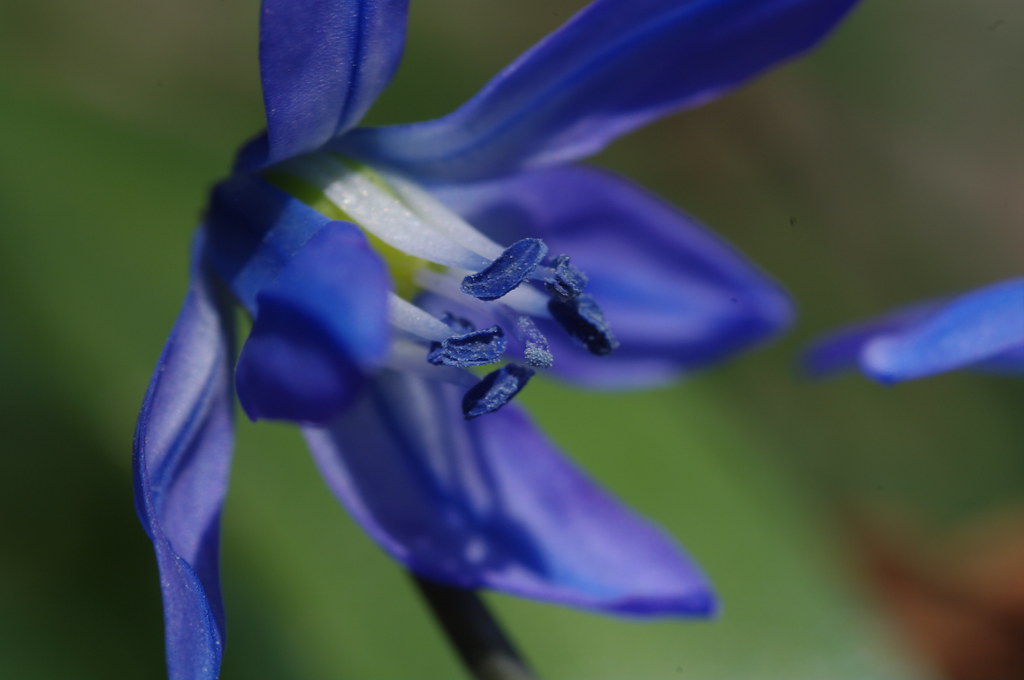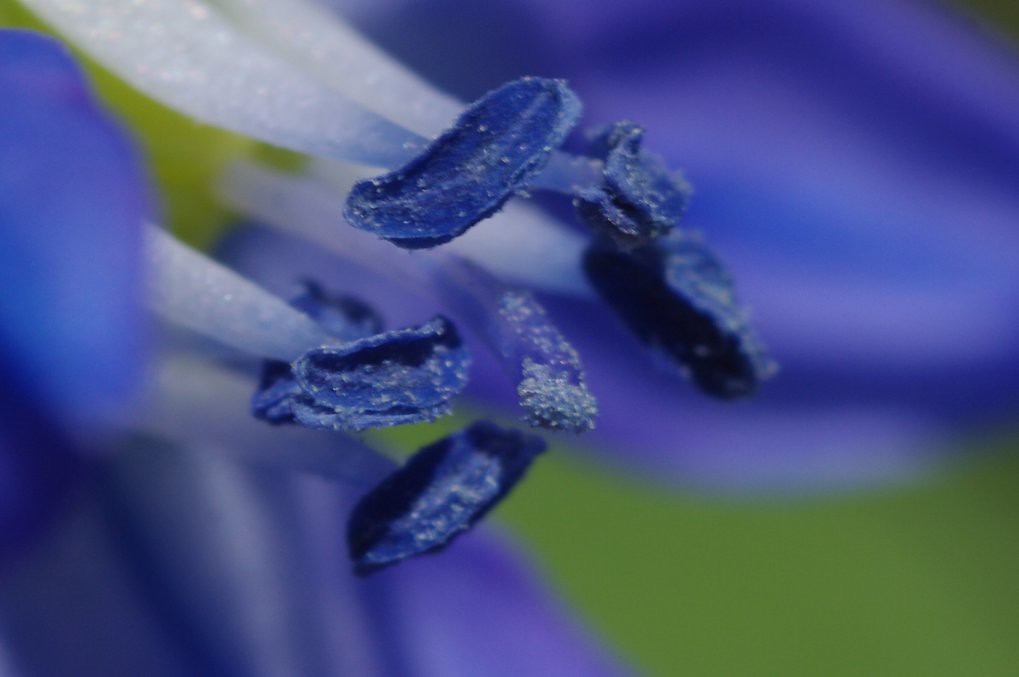 Originally posted by monochrome
Originally posted by monochrome 
Sounds like a question for falconeye
ok, I'll bite

 Originally posted by Douglas_of_Sweden
Originally posted by Douglas_of_Sweden 
Assuming that I mount the camera looking downward some 10-50cm above the water surface with a 1:1 macro at its close focus range, have a good lightening etc and start making bubbles. What could I resolve?
newarts got the math out, so no reason to reiterate here.
IMHO, most important lesson from newarts comment: you need large F-stop for DoF and small F-stop for less diffraction. If everything is done in an optimal way (microscope), you resolve objects the size of the wavelength (0.5 Ám) and below using coherent light sources and some smart software.
However, large F-stop and small F-stop are in conflict. So, a more interesting question is what is achievable in practical terms.
The attachment shows an image I took from a bee, showing one of its compound eyes. A worker bee's compound eye consists of 9000 ommatidia, each about 20 Ám (
http://www.trin.cam.ac.uk/horacebarlow/8.pdf ) in diameter. The first attachment is the image I took with a K20D, the second is an 100% crop from the region showing the reflection in the eye.
An ommatidia is about 50 pixels large which in the photograph (if the size is 20Ám) would translate to 0.4Ám per pixel. However, I know the actual magnification (6x) and pixel pitch (5Ám), so a pixel is actually 0.83Ám large, i.e., an ommatidia in my image is 40Ám large. This much for the credibility of scientific sources about bees ... Anyway, there is no way to see a bee's ommatidia with your naked eye.
However, the smallest detail is well below an ommatidia. It is about 3 pixels which is one line in the interference line pairs (2.5 Ám). I would say the smallest structures resolved are about
2Ám or a bit less. The interference is created by the light interfering with the reflection from the ommatidia's bottom end.
At the same time, you see the infinitesimal DoF.
So, for your sea spray experiment, you have exactly one way to go (if hunting for best results):
1. Set up a beyond 1:1 macro assembly. A 1:1 macro limits you to about 7Ám. This is how I did it:
- Mount a DA*300 to the body, wide open
- Use a reverse filter ring and screw to the DA*300
- Screw a Zeiss 50/1.4 to the other side of the filter ring.
- Focus both lenses to infinity, set the Zeiss to F/4.
Considerations:
- Magnification is 300/50 or 6x.
- Resolution is limited by the Zeiss center resolution at infinity focus only. Which is best at F4. The diffraction limit at F4 is 0.55Ám*1.22*4/2 = 1.3Ám but at F4, you have a mix of 50% diffraction limit and 50% classical lens blur. So, practical resolutions for medium contrast subjects of 2Ám are as good as it gets. Don't use a larger or smaller aperture or lesser lens. The resolution will suffer.
2. Use a flash at half or quarter power. Motion blur at these sizes will be huge and you need the light! 2Ám at 5km/h translate to 1/360,000s! Flashes at full power are not fast enough.
3. I think, You really *must* mount the camera horizontally above the water, looking parallel to the water surface. Protect from the spray but there is no alternative. You can mount at different altitudes to measure how density reduces with height. Use a black surface as background. Flash from the side, making the spray stand out against the black background.
4. You will only see a "slice" of droplets due to the limited DoF (at a distance of 46mm from the open lens mount). But you'll see deeper if droplets are larger. So when counting them, you'll have to correct for this effect, e.g., by imposing a minimum edge sharpness of vertical edges in order to count them. Edge sharpness can be measured programatically.
5. There is no need for video. Video would reduce the available resolution a lot and results would be too blurry anyway to be useful.
6. Speed of droplets can be determined theoretically (how their density decreases with height) or from the difference of horizontal and vertical edge blur (motion blur).


 Similar Threads
Similar Threads 










 amazing
amazing










 Post #10 by falconeye
Post #10 by falconeye








